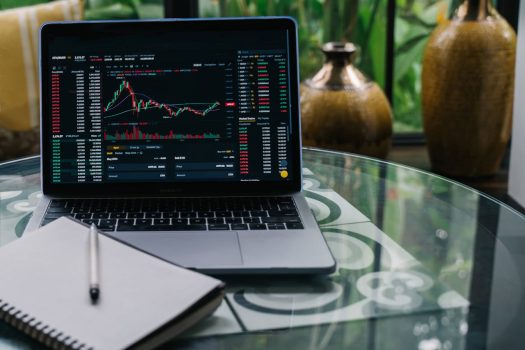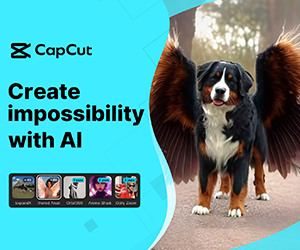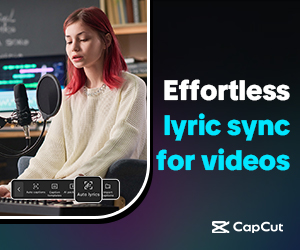 Pin
Pin Photo by Anna Tarazevich
The days of manual chart analysis are fading fast. With AI in Trading, data isn’t just processed—it’s interpreted, learned from, and used to forecast movements with precision. At its core, AI systems combine machine learning, natural language processing, and algorithmic modeling to detect patterns and anomalies in real time.
Traders who once relied on static indicators now use dynamic models that evolve as markets shift. These systems digest market news, social media trends, and technical data—executing trades in milliseconds based on probabilistic outcomes. It’s like having a 24/7 analyst on steroids, minus the burnout.
Unlike traditional rule-based bots, AI-driven models adapt. Feed it more data, and it gets sharper. Reinforcement learning, neural networks, and sentiment analysis are now common tools in the arsenal. This isn’t automation—it’s strategy on autopilot, with decisions backed by billions of data points.
Table of Contents
Comparing Popular AI Trading Strategies
AI-driven trading isn’t one-size-fits-all. There are multiple strategies, each using different forms of intelligence. The first and oldest is the rule-based system, where pre-coded conditions like “buy if RSI < 30” trigger trades. It’s predictable but lacks adaptability. Many early trading bots still use this method, often falling short in volatile markets.
Then came machine learning models—these learn from past data. They’re not told what to look for; instead, they identify patterns on their own. Deep learning, a subset, mimics the human brain using neural networks. These strategies excel at handling complex, non-linear relationships like sudden price movements influenced by news or macro-events.
The most effective systems today are hybrid models. They mix fixed rules with machine learning and often include real-time sentiment analysis. For example, combining candlestick patterns with Twitter trend data or news sentiment gives a multi-layered view. These models don’t just predict—they adapt. And in fast-paced environments like crypto or F&O, that adaptability makes the difference between profit and loss.
Risks and Rewards of Letting AI Take the Wheel
Letting artificial intelligence run your trades sounds futuristic—and it is. But even smart systems come with trade-offs. The biggest reward is speed and accuracy. AI doesn’t hesitate. It spots signals, calculates probabilities, and executes without emotion. For scalpers or high-frequency traders, this edge can mean higher win rates and better timing.
However, the risks are just as real. Markets are chaotic. If an AI model is trained only on past data, it may misfire when exposed to black swan events—like a war announcement or sudden regulatory change. There’s also the “black box” problem: traders often don’t know why a model made a certain decision. This lack of transparency can be dangerous during volatility.
Another concern is overfitting—when an AI performs great on historical data but poorly in live markets. That’s why successful AI trading setups always include human oversight, stop-loss control, and regular retraining. The blend of smart automation and human instinct is what makes AI tools useful, not just impressive.
Which Countries Are Leading the AI Trading Revolution?
AI in trading is a global movement, but some countries are clearly ahead in adoption and innovation. The United States tops the list, with Wall Street firms like Goldman Sachs and Citadel using AI for everything—from high-frequency trading to predictive market analytics. Silicon Valley’s tech ecosystem also fuels advancements in deep learning models that directly power trading bots and quant funds.
China is catching up fast. With its push for AI dominance and massive domestic trading volumes, Chinese firms are integrating AI across crypto, stock, and commodity markets. Companies like Alibaba and Tencent are investing in AI research that supports algorithmic trading systems, while local exchanges experiment with automated supervision using AI.
The UK and Singapore are also notable players. London’s financial institutions have embraced AI for currency trading and risk management, while Singapore’s regulatory clarity makes it a hub for fintech startups building AI trading tools. Meanwhile, in India, AI trading is still growing, mostly among retail traders using platforms with built-in bots and Telegram signals. The tech is global, but regulation and infrastructure decide who leads.
Building a Personal AI Trading System—Is It Possible?
Creating your own AI trading system used to sound like a PhD-level task. But with the rise of open-source tools and trading APIs, it’s now within reach for retail traders too. Platforms like Python, TensorFlow, and scikit-learn let you build models that can predict price movement, identify trade setups, or even scrape news for sentiment analysis—all without needing a hedge fund budget.
The process starts with data—lots of it. You train your model on historical charts, using features like price action, indicators, volume, and sometimes even tweets or Reddit threads. Then you backtest it in a sandbox environment. APIs from brokers like Zerodha, Alpaca, or Interactive Brokers let your bot go live once you’re confident.
Still, building your own system comes with challenges: tuning parameters, handling slippage, and ensuring it doesn’t crash during volatility. Many developers start by customizing open-source bots or connecting AI models to platforms like MetaTrader or TradingView using webhooks. With caution, patience, and constant testing, a personal AI trader isn’t just possible—it’s becoming common among tech-savvy investors.
Why Emotionless Trading Might Be the Best Strategy Yet
One of the biggest advantages AI has over human traders? It doesn’t panic. It doesn’t overtrade. It doesn’t chase losses or second-guess a position because of fear or greed. Emotionless execution is where AI truly shines—and for many, it’s the reason AI trading strategies consistently outperform manual ones over time.
While humans are prone to cognitive biases—like loss aversion or overconfidence—AI sticks to logic. It analyzes patterns, executes based on probabilities, and avoids the psychological pitfalls that often destroy good strategies. In volatile markets like crypto or intraday options, this lack of emotion becomes a huge strength.
Still, it’s not about removing the human altogether. The best results often come when human judgment sets the rules, and AI handles the execution. This hybrid approach allows traders to focus on broader strategy, while the system handles split-second decisions. When stress and emotion are off the table, trading becomes more like engineering—precise, efficient, and surprisingly calm.
Courses and Mentorship—Can You Learn AI Trading?
Yes, and not just from expensive finance schools. In today’s digital world, AI trading education is more accessible than ever. Top platforms like Coursera, Udemy, and edX offer structured courses in algorithmic trading, machine learning for finance, and Python-based bot development. Many even include real trading simulations and API integration projects.
For serious learners, programs from institutes like the QuantInsti (India), CFI (USA), or EPAT offer professional-level mentorship and certifications. These programs walk you through creating strategies, backtesting them, managing risk, and deploying models live. Some even partner with brokers to offer hands-on algo trading labs and live case studies.
But beyond formal courses, mentorship can accelerate learning. Reddit communities, private Discord groups, and Telegram forums often host experts willing to share insights or offer feedback. The AI trading world moves fast—and having a mentor or experienced coder to review your models or help troubleshoot can make all the difference between success and burnout. Learning AI trading is no longer about theory—it’s about practice, feedback, and consistent refinement.
Can You Really Trust AI with Real Money?
Letting an algorithm touch your capital can feel risky—and it is, if not handled carefully. While AI trading systems are faster and often more accurate than humans, they’re still tools. Tools are only as good as their setup. A poorly trained model or misconfigured strategy can burn through funds just as fast as a bad manual trade.
That said, risk-managed AI systems are proving their worth. Many hedge funds, proprietary trading firms, and even retail traders use AI for high-frequency execution, portfolio balancing, and position sizing. With proper testing, stop-loss placement, and regular performance monitoring, AI can reduce emotional mistakes and improve consistency.
The real danger comes when traders treat AI as “set it and forget it.” Markets evolve. What worked last year might fail tomorrow. That’s why even top-tier AI trading systems include manual overrides, scenario testing, and real-time alerts. Trusting AI doesn’t mean removing control—it means shifting your role from the pilot to the system designer, constantly observing and improving.
Blending Intelligence with Intuition
AI trading isn’t about replacing human intelligence—it’s about amplifying it. The best traders today aren’t just coders or analysts; they’re designers of systems that learn, adapt, and evolve. By merging machine precision with human intuition, they build strategies that are both flexible and formidable.
But trading with AI also demands responsibility. It’s easy to get seduced by automation and forget that markets are driven by human behavior, policy shifts, and unpredictable events. A well-designed AI system should enhance your instincts, not blindfold them. The goal isn’t just smarter trades—it’s more controlled, more consistent outcomes.
Ultimately, the future of trading belongs to those who can balance logic with awareness. You don’t have to be a genius or a quant prodigy—you just need curiosity, discipline, and a willingness to learn. Whether it’s through building your own model, using Telegram signals wisely, or enrolling in mentorship, AI is no longer out of reach. It’s right at your fingertips—and it’s ready when you are.
FAQs
AI in trading uses machine learning and algorithms to analyze market data, predict trends, and execute trades with minimal human input.
AI trading can be faster and more data-driven, but it works best when combined with human oversight and risk management.
Yes, beginners can use pre-built AI bots or platforms with auto-trading features. Learning Python and trading basics is helpful.
Some Telegram signals are AI-powered and accurate, but not all are reliable. Always backtest and verify before using them for real trades.
Basic coding skills help, especially in Python. But low-code platforms and courses now allow even non-coders to build and run AI bots.


































